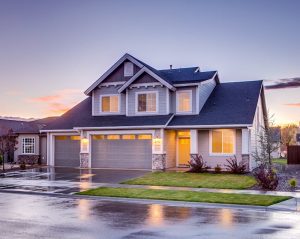Over the years, the term “energy-efficient home” has become a buzzword. Many people believe that it can encourage significant utility savings and reduce total household spending.
The question, though, remains: is it just hype, or is it truly worth it?
How Important Is Energy Efficiency for American Homeowners?
According to the National Association of Home Builders (NAHB), energy efficiency is one of home buyers’ sought-after features. This is especially true among millennials.
In its survey, over 80% of the potential young buyers are willing to spend up to 3% more if the home is energy efficient.
Meanwhile, a 2014 Energy Pulse study revealed that 15% would want to buy or build a new house. When asked whether energy efficiency would impact their selection, an overwhelming 80% said it would. Around 78% mentioned that it would somewhat affect their decision.
Over 70% of the respondents also shared that they wouldn’t mind spending more on a high-performance home. This is even if the survey statement clearly mentioned that this property type might also raise mortgage costs.
The results of the survey suggest the following:
- More home buyers and owners are at least aware of an energy-efficient home design and its benefits.
- They are ready to spend a premium if energy efficiency leads to significant savings over the years.
- Energy efficiency can potentially enhance a home’s value.
Does It Truly Save You Money?

Perception, though, can sometimes be different from reality. When it comes to energy efficiency in the home, does it truly help homeowners reduce their monthly expenses? Is it worth the investment?
To answer the question is to compare the costs and then the potential savings:
The Cost of Energy Efficiency
Adding energy-efficient features to the home will require some home remodeling. According to Home Advisor, the cost of home renovations can range from $10,000 to $150,000. It depends on the area’s size and whether it is a low, mid, or high-end project.
Meanwhile, HGTV once listed some hidden costs of renovation. Interestingly, it included higher utility bills due to the equipment and tools used. For instance, using nail guns or compressors could add at least $10 to electricity costs for the month.
How about energy-efficiency-driven projects? There are two pieces of good news:
- Big-ticket items are getting cheaper over the years.
- Some projects need less investment or spending than others.
One of the most popular energy-efficient products is the solar panel. In Utah, installing them could cost at least $12,000. However, MIT research revealed that photovoltaic modules’ costs already dropped by a whopping 99% over the past four decades.
Even amid the pandemic, the price of solar panels continued to decline. During the first quarter of 2020, the cost of the module was $0.21 per watt. It’s significantly lower than $0.63 per watt in 2016.
Those on a tight budget can focus more on energy-efficiency projects that are more affordable, to begin with. These include vinyl window installation.
According to the 2020 Cost vs. Value Report, replacing the windows with vinyl could cost about 13,000 in the state. But the impact of the alteration could help homeowners recoup up to 76% of their expenses. This rate was higher compared to that of the previous year.
Further, vinyl window replacement in Utah seems to be cheaper than the national average spending. Others may have to spend over $15,000 while homeowners recover around 74% after the sale.
Energy Efficiency Value
Based on the figures above, one can assume that making the home more energy efficient will be costly because of the renovations or remodeling necessary. But it may also increase the value of the property later. It then allows homeowners to recover a big portion of their investment.
But do these changes reduce utility spending? Energy Sage shared that, on average, a home could save up to 25% of their utility costs. It could be worth over $2,000 by the end of the year — and that’s a lot.
Homeowners can use it to pay their mortgage. According to the US Census Bureau, a household usually pays around $1,500 on a mortgage. In Utah, it is slightly lower at $1,497.
The average savings per energy-efficient design can vary, though. A better-performing window could mean spending up to $228 less on winter costs since the change can prevent heat loss. Regulating either heating or cooling of the home can bring down the spending on utility by 42%.
In conclusion, while introducing energy efficiency into the home costs significant money, homeowners can recoup their investment through the years. Even if they are impatient, the demand for such a feature could increase the get-go’s property value.











